Apr 12, 2025
Author:Amanda Lyu
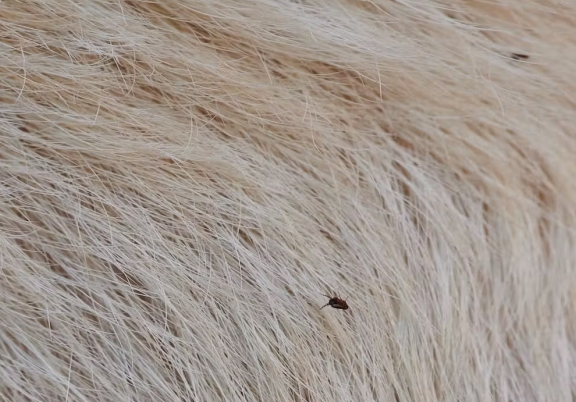
Fleas are tiny, uninvited pests that can turn your cat’s peaceful routine into an itchy and uncomfortable experience. One moment your feline is happily grooming or napping, and the next they are scratching and clearly distressed. As a caring cat parent, this is not something you want to ignore.
The good news is that there are safe and natural ways to handle it. In this guide, we will walk you through how to identify the early signs of fleas in cats, how to treat them using gentle methods, and how to prevent them from coming back.
Whether you have just noticed a few unusual scratches or you are preparing ahead, this guide will help you keep your cat happy, healthy, and flea-free.
For the comfort of your cat, fleas on cats are more than just a nuisance; they pose a real threat to the health and happiness of your feline friend.
From the thrill of an outdoor expedition to the snug warmth of an afternoon on the couch, wherever your kitty goes, violent flea attacks accost her.
Indoor cats get fleas, too! You must know how to get rid of fleas on your cats fast enough to save your cherished pet and keep your home clean, safe, and free from pesky creatures.
In this comprehensive guide, we shall divide and impart every knowledge from the very first center of examination right to the employment of natural remedies and treatments validated by veterinarians.
Fleas are blood-sucking ectoparasites on cats that belong to the Ctenocephalides felis, the cat flea.
The little, nimble insects can jump great distances. We cannot catch the cat flea if the host gets infested.
Flea infestation in cats comes about in the following manner:
A female flea lays fifty eggs per day. A few hundred eggs can be laid in up to fourteen days.
They can be a serious human pest, causing intense itching, allergic reactions, and secondary infection.
Fleas are adapted to warm and moist conditions and are indoor dwellers by staying within the air conditioning and turned spaces.
These flea-infected cats make the pets unbearably itchy and pose a threat to their lives. They constitute health complications in cats, like Flea Allergy Dermatitis is a reaction caused by flea stings and the saliva that induces intense itching and sores.
Anemia is rare, but heavy infestation will lead to blood loss and weakness in kittens.
The cat eats fleas during grooming, permitting the habitation of tapeworms in the small intestine.
Skin infections occur when the lesions become secondarily infected because it is likely that the lesions itch.
Disease transmission would involve Bartonella (cat scratch) because fleas harbor this disease.
So, if you have been wondering, "My indoor cat has fleas—what should I do about it?"
It is a thought shared by many pet parents who think that keeping their cats indoors prevents them from such pest invasions. Unfortunately, and one needs not to mention, it does not hold for all cases.
Here is how fleas sneak their way into even well-maintained homes:
● Bringing them in on shoes or clothes after being outside.
● Fleas may hitch a ride into the home on a dog or other pet that goes outside.
● Dormant flea eggs may lurk in second-hand furniture, carpets, or bedding.
● Fleas come to the house from wildlife or rodents; rats and squirrels, for example, can lead fleas to or into the house.
Once inside, fleas will quickly locate a host- your cat- and start breeding.
The earlier they pop up in the open, the easier and more effective their treatment is. Here are some early signs of fleas on cats:
● Frequent scratching or grooming, especially around the neck and base of the tail
● The existence of flea dirt (black specks) in your feline's fur or bedding
● Biting or excessive licking of specific areas
● Coughing, irritation, or hair loss
● Signs of agitation are accompanied by thoughts of high pressure and possibly hyperactivity.
● Rarely will they see fleas, which leap through the fur or stay on the top of their heads, necks, and bellies.
And just one or two of these signs may indicate that a bigger problem is occurring because of rapidly growing fleas.
Here are the fastest methods possible:
Capstar (nitenpyram), for example, is an oral tablet that can start killing adult fleas in as little as 30 minutes. We can use the following topical products to kill fleas and prevent future infestations: Frontline, Advantage, and Revolution.
A long-term solution, Seresto provides up to 8 months of uninterrupted protection from fleas and ticks. Use dog flea treatment for cats, as most are poisonous to felines.
Your cat is the flea's primary home, so start there:
Flea comb daily for adults and flea dirt. If the flea comb catches a flea, dip it in soapy water, as it kills fleas.
You can administer the medicine orally according to your vet's advice.
Let your cat bathe with the vet-recommended flea shampoo (if your cat will tolerate water).
Want to know how to get fleas off cats without a bath?
Try oral or topical meds, flea combs, and flea collars; they come in handy for cats that are water worriers.
Up to 95 percent of cat flea populations (eggs, larvae, and pupae) reside within your home:
Vacuum daily in the following areas: carpets, rugs, floor cracks, under the sofa, etc.
You should wash your cat's bedding and linens in hot water.
Use flea sprays or foggers that contain insect growth regulators (IGR) to interrupt the flea development cycle.
If the infestation is severe, seek professional help. To prevent further infestations, make it a point to empty the vacuum bag or throw it outside.
Natural remedies can work effectively against fleas in mild infestations or aid in treatments. The top natural methods for flea care are below:
Sprinkle food-grade Diatomaceous Earth (DE) on carpets and furniture; it kills fleas by dehydrating them.
Prepare Apple Cider Vinegar Spray by mixing 1:1 with water, then spray around the home, NOT on your cat.
You can also use Lemon Spray by cutting a lemon, boiling it, steeping it overnight, and using it as a surface spray.
Use diffusers with vet-approved oils only, such as cedarwood or nder. Never apply to your cat.
Natural methods are better for prevention or as an after-treatment course.
Ultimately, once we clear the cat flea problem, the other objective is to be able to harass fleas as long as possible. To keep fleas away from the cats, here are some ways to go:
Receive and utilize monthly flea preventatives, which can be oral or topical
Regular cleaning of the home: vacuum-cleaning, washing of bedding, and decluttering
Weekly checking of your cat (with a flea comb)
Take care of any visiting pets, outside animals, or second-hand items
Be conscious of cat fleas, as they will bite humans!
Perseverance and patience are ingredients. Every situation is different, but here is a rough timetable:
● In 24 and 48 hours, fast-acting drugs kill most adult fleas.
● In 7 and 14 days, eggs hatch, and larvae emerge.
● In 3 and 4 weeks, if treatment is consistent, it will eliminate fleas.
● In 6 weeks, we can achieve complete eradication from the environment (including within the home) through continued management.
Constant treatment is everything. Missing even a single dose or stopping early will give the fleas a new lease of life.
We can treat most infestations at home; however, we need a vet's consultation if:
● Your cat is excessively itchy, lethargic, or in pain.
● You see tapeworm segments in the litter box.
● Your cat is losing hair or has sores.
● There has been no improvement for 2-3 weeks.
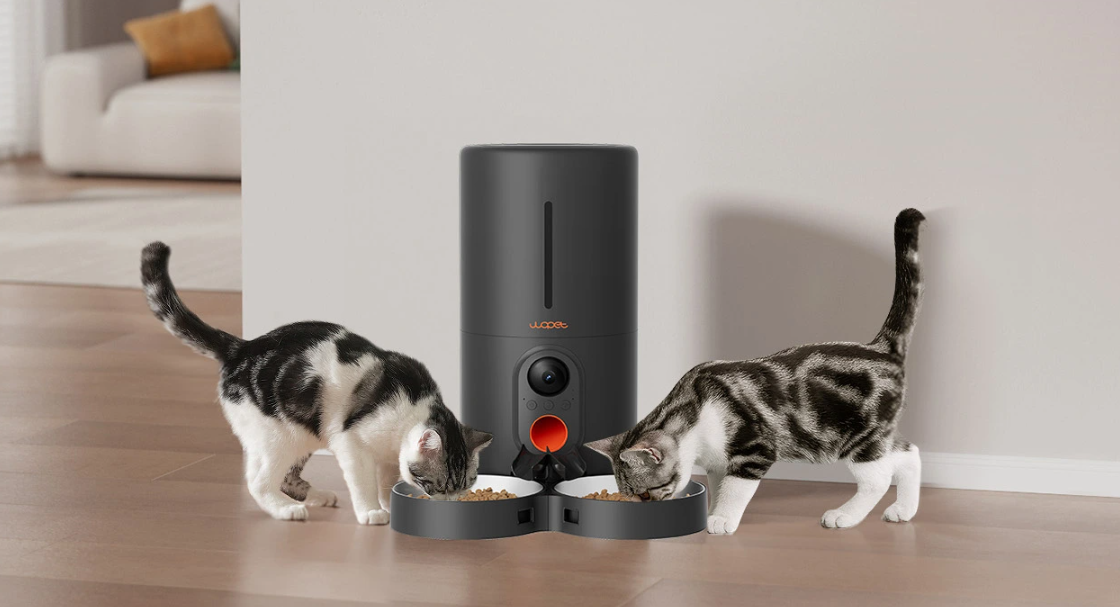
WOpet Heritage View Automatic Pet Feeder with Camera
Fleas on cats are more than just an annoyance. They affect your cat's health, comfort, and peace of mind. Whether your indoor cat picked up fleas through hidden visitors or you're spotting early signs like scratching or black specks, taking fast and consistent action is key.
You now know what to look for, how to get rid of fleas on cats naturally or instantly, and how to keep them away for good. From regular combing and vet-recommended treatments to deep cleaning and natural remedies, these steps can help restore calm and comfort to your home.
But what if you could do even more, especially when you're not around to supervise?
With WOpet’s smart pet care products, like automatic cat feeders and pet cameras, you can keep an eye on your feline's behavior, and well-being and watch for unusual scratching, manage feeding routines, and make sure your cat stays healthy and content while you’re away. Pair that with a clean space and regular checkups, and you're giving your cat a strong defense against fleas.
Browse WOpet’s thoughtfully designed range of feeders, water fountains, and pet accessories that support a cleaner, more consistent routine for your pet. Whether you're tackling fleas or just looking to pamper your cat with a little more care, everything you need is just a click away. Stay prepared. Stay proactive. Stay flea-free.
Because nothing says "I love you" like a home where your cat can nap, play, and purr without a single itch.
Yes! Indoor cats can catch fleas from human visitors, other pets, used furniture, or even open windows.
Capstar is one of the fastest treatments—it starts killing fleas in 30 minutes. Revolution and Comfortis also work quickly.
Oral medicine, topical treatments, flea combs, or flea collars. There are lots of effective bath-less options for water-averse kitties.
Early signs of fleas in the cat are:
Scratching or licking
Black specks (flea dirt); Pained, red skin; Hair loss or behavioral changes.
First and foremost, identifying early signs of fleas in cats means fast relief.
Not forever. Cat fleas on humans bite and itch, but can't survive and breed on human hosts.
Natural ways to eliminate fleas on cats include DE sprays, vinegar sprays, or herbal options. They work wonders for mild cases and prevention.
You should get an immediate flea treatment from the vet. You can clean up your home from top to bottom. You can monitor progress over time. Prevent reinfestation events.
Fleas on cats, sometimes even on those who never leave the house, are more common than most pet owners realize. The good news? Tools, knowledge, and support make it achievable.
Watch for the early signs of feline flea presence, then treat and maintain a hygienic and happy den for your furry friend while keeping the itching enemies away.
Preventive soil maintenance is just as essential as curing pest infections. Hence, we offer a variety of intelligent pet products, from automatic feeders, which can ensure your cat's health and nourishment, to pet cameras that allow you to follow excessive scratching or other signs of discomfort when you are not there. Happy feeding, happy observing, happy cat (and flea-free)!
If you want information about "what kills fleas on cats instantly" or "natural ways to get rid of fleas on cats", WOPET will help you to be proactive and consistent; your kitty deserves lifelong flea-free fun with care, tools, toys, and accessories.
Label:
Popular Post

What to Feed a Sick Dog With No Appetite? [2025 Guide]
May 16, 2023
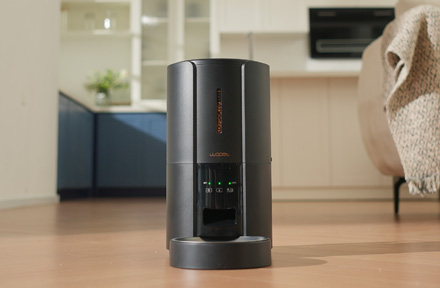
Troubleshooting Common Issues with Automatic Pet Feeders: Tips & Tricks for Pet Owners
Oct 26, 2023
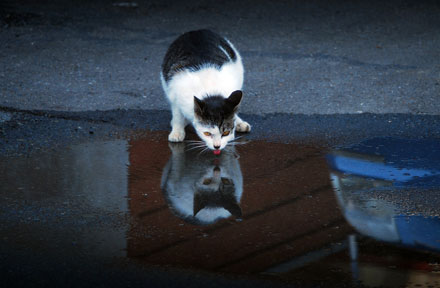
Why Does My Cat Cough After Drinking Water? 8 Potential Reasons
Mar 13, 2023
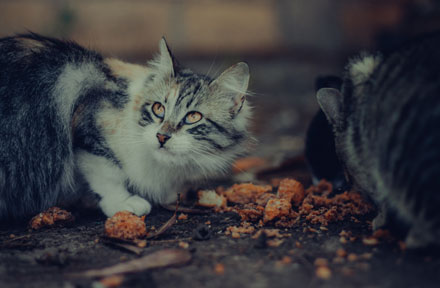
My Cat Only Eats A Little at A Time - What to Do?
Feb 27, 2023
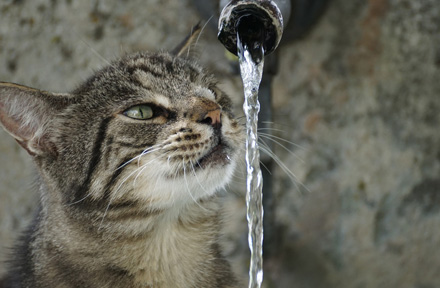
Why is My Cat Throwing up Water? Top 5 Causes Here
Feb 08, 2023
$99.99
$129.99
Copyright © 2025 WOPET. All Rights Reserved.